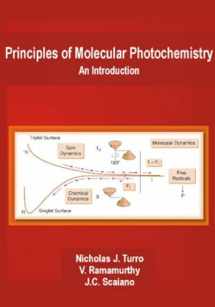
Principles of Molecular Photochemistry: An Introduction
Book details
Summary
Description
This book develops photochemical and photophysical concepts from a small set of familiar principles. Derived in part from Nick Turro s best-selling text for three decades Modern Molecular Photochemistry this updated primer introduces an initial paradigm that relates the photon and a reactant molecular structure to photochemistry through the structure and dynamics of electronically excited states, reactive intermediates and products. The same paradigm is readily adapted to incorporate the photon and a reactant molecular structure to photophysics. The book provides brilliantly clear descriptions in pictorial terms that can be readily understood by the student and applied to systems of interest. This text will be of interest to not only practicing photochemists and their students, but also to biological scientists, polymer scientists, material scientists and nanoscientists who use photochemistry and photophysics in their research and teaching.


We would LOVE it if you could help us and other readers by reviewing the book
Book review



